
Louisa May Alcott was an American novelist, short story writer, and poet best known as the author of the novel Little Women (1868) and its sequels Little Men (1871) and Jo's Boys (1886). Raised in New England by her transcendentalist parents, Abigail May and Amos Bronson Alcott, she grew up among many well-known intellectuals of the day, including Margaret Fuller, Ralph Waldo Emerson, Nathaniel Hawthorne, Henry David Thoreau, and Henry Wadsworth Longfellow.
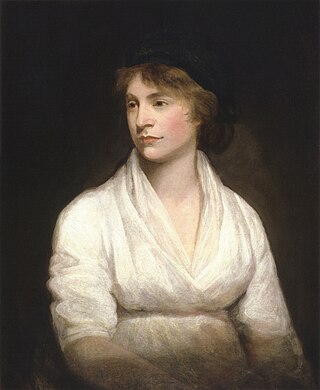
Mary Wollstonecraft was a British writer, philosopher, and advocate of women's rights. Until the late 20th century, Wollstonecraft's life, which encompassed several unconventional personal relationships at the time, received more attention than her writing. Today Wollstonecraft is regarded as one of the founding feminist philosophers, and feminists often cite both her life and her works as important influences.

Children's literature or juvenile literature includes stories, books, magazines, and poems that are created for children. Modern children's literature is classified in two different ways: genre or the intended age of the reader, from picture books for the very young to young adult fiction.

Little Women is a coming-of-age novel written by American novelist Louisa May Alcott, originally published in two volumes in 1868 and 1869 at the request of her publisher. The story follows the lives of the four March sisters—Meg, Jo, Beth, and Amy—and details their passage from childhood to womanhood. Loosely based on the lives of the author and her three sisters, it is classified as an autobiographical or semi-autobiographical novel.
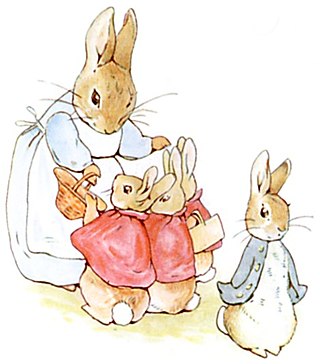
A picture book combines visual and verbal narratives in a book format, most often aimed at young children. With the narrative told primarily through text, they are distinct from comics, which do so primarily through sequential images. The images in picture books can be produced in a range of media, such as oil paints, acrylics, watercolor, and pencil. Picture books often serve as pedagogical resources, aiding with children's language development or understanding of the world.

Dame Margaret Drabble, Lady Holroyd, is an English biographer, novelist and short story writer.

Tomboy is a term used for girls or young women with masculine traits. It can include wearing androgynous or unfeminine clothing and engaging in physical sports or other activities and behaviors usually associated with boys or men.

Laura Elizabeth Ingalls Wilder was an American writer. The Little House on the Prairie series of children's books, published between 1932 and 1943, were based on her childhood in a settler and pioneer family.
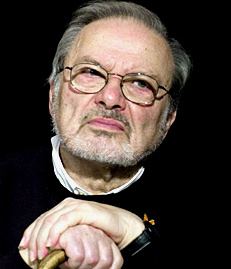
Maurice Bernard Sendak was an American author and illustrator of children's books. He became most widely known for his book Where the Wild Things Are, first published in 1963. Born to Polish-Jewish parents, his childhood was affected by the death of many of his family members during the Holocaust. Sendak also wrote works such as In the Night Kitchen, Outside Over There, and illustrated many works by other authors including the Little Bear books by Else Holmelund Minarik.
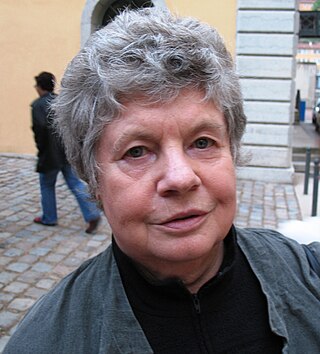
Dame Antonia Susan Duffy, known professionally by her former married name as A. S. Byatt, is an English critic, novelist, poet and short story writer. Her books have been widely translated, into more than thirty languages.

John Newbery, considered "The Father of Children's Literature", was an English publisher of books who first made children's literature a sustainable and profitable part of the literary market. He also supported and published the works of Christopher Smart, Oliver Goldsmith and Samuel Johnson. In recognition of his achievements the Newbery Medal was named after him in 1922.

Angela Brazil was one of the first British writers of "modern schoolgirls' stories", written from the characters' point of view and intended primarily as entertainment rather than moral instruction. In the first half of the 20th century she published nearly 50 books of girls' fiction, the vast majority being boarding school stories. She also published numerous short stories in magazines.

Lois Lenore Lenski Covey was a Newbery Medal-winning author and illustrator of picture books and children's literature. Beginning in 1927 with her first books, Skipping Village and Jack Horner's Pie: A Book of Nursery Rhymes, Lenski published 98 books, including several posthumously. Her work includes children's picture books and illustrated chapter books, songbooks, poetry, short stories, her 1972 autobiography, Journey into Childhood, and essays about books and children's literature. Her best-known bodies of work include the "Mr. Small" series of picture books (1934–62); her "Historical" series of novels, including the Newbery Honor-winning titles Phebe Fairchild: Her Book (1936) and Indian Captive: The Story of Mary Jemison (1941); and her "Regional" series, including Newbery Medal-winning Strawberry Girl (1945) and Children's Book Award-winning Judy's Journey (1947).

What Katy Did is an 1872 children's book written by Sarah Chauncey Woolsey under her pen name "Susan Coolidge". It follows the adventures of a twelve-year-old American girl, Katy Carr, and her family who live in the fictional lakeside Ohio town of Burnet in the 1860s. Katy is a tall untidy tomboy, forever getting into scrapes but wishing to be beautiful and beloved. When a terrible accident makes her an invalid, her illness and four-year recovery gradually teach her to be as good and kind as she has always wanted.
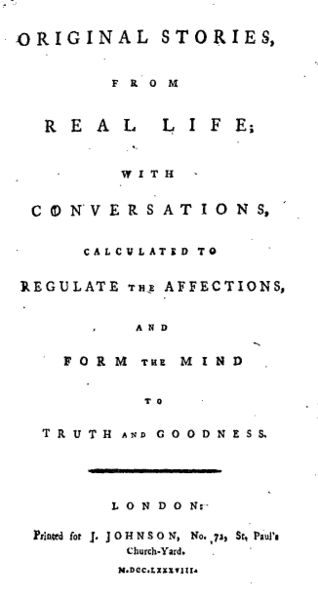
Original Stories from Real Life; with Conversations Calculated to Regulate the Affections, and Form the Mind to Truth and Goodness is the only complete work of children's literature by the 18th-century English feminist author Mary Wollstonecraft. Original Stories begins with a frame story that sketches out the education of two young girls by their maternal teacher Mrs. Mason, followed by a series of didactic tales. The book was first published by Joseph Johnson in 1788; a second, illustrated edition, with engravings by William Blake, was released in 1791 and remained in print for around a quarter of a century.

Lessons for Children is a series of four age-adapted reading primers written by the prominent 18th-century British poet and essayist Anna Laetitia Barbauld. Published in 1778 and 1779, the books initiated a revolution in children's literature in the Anglo-American world. For the first time, the needs of the child reader were seriously considered: the typographically simple texts progress in difficulty as the child learns. In perhaps the first demonstration of experiential pedagogy in Anglo-American children's literature, Barbauld's books use a conversational style, which depicts a mother and her son discussing the natural world. Based on the educational theories of John Locke, Barbauld's books emphasise learning through the senses.

Five Go to Mystery Moor is a popular children's book written by Enid Blyton. It is the thirteenth novel in the Famous Five series of books.
The Katy series is a set of novels by Sarah Chauncey Woolsey, writing under the pen-name of Susan Coolidge. The first in the series, What Katy Did, was published in 1872 and followed the next year by What Katy Did at School. What Katy Did Next was released in 1886. Two further novels, Clover (1888) and In the High Valley (1890), focused upon other members of the eponymous character's family. The series was popular with readers in the late 19th century.
Bernette Ford was an American author, editor and publisher. She worked as editor-in-chief at Grosset & Dunlap and later Scholastic Books, where she was vice-president of the Cartwheel imprint, which she helped launch. She was known for being one of the few African-American editors working with children's books, having begun her career in the 1970s.

















